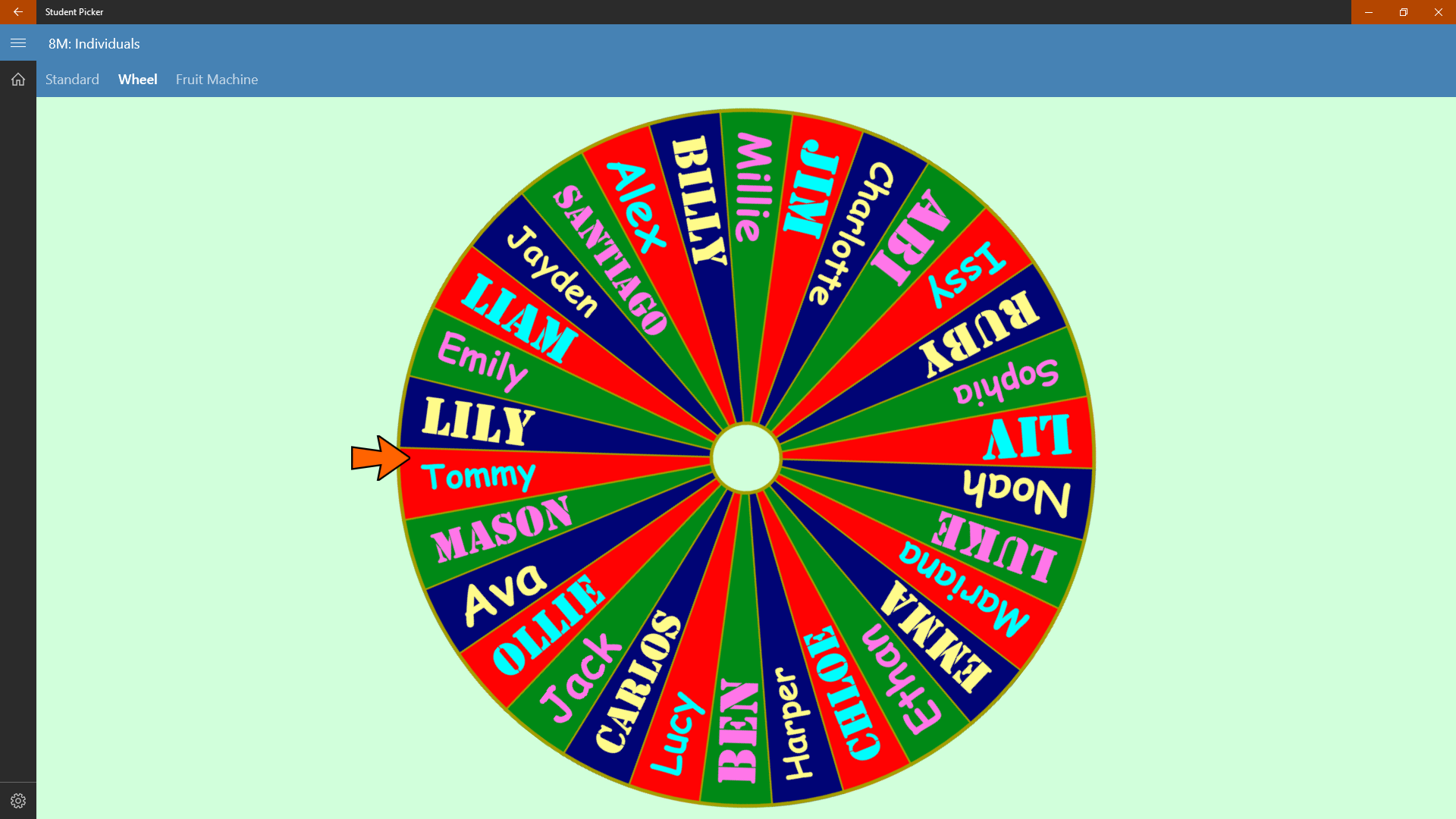


You can set it up in just a few minutes and it will work automatically.

Everyone has an equal chance of being selected, anywhere in the world.Īnother advantage of using a wheelspinner is that it is very easy to use. First, it’s a very fair way to select names or make other choices. There are many benefits to using a wheel spinner. It can be used for games, competitions or other situations where you have to choose between multiple options. The person whose name is associated with the chosen choice is the winner! The benefits of using a wheelspinnerĪ wheelspinner can be a great way to randomly select names or make other choices. Spin the wheel and watch it go round and round until it lands on a pick. Write your choices on pieces of paper and attach them to the wheel with tape or thumbtacks.Ĥ. Make sure it is level so that it rotates correctly.ģ. You can buy one online or at many stores that sell toys and games.Ģ. You can use a wheel spinner to pick winners for competitions, make decisions or play games. How to use a wheel spinner?Ī wheel spinner, also known as a spin wheel, is a great way to randomly select names or choices. This can be useful when you need to pick a winner for a contest, or when you need to make a random selection for another purpose. So if you’re indecisive, give the wheelspinner a spin! What is a wheel spinner?Ī wheel spinner is a tool that can be used to randomly select a name from a list of names. With this tool you can quickly and easily make a random selection from a list of names.

It is the reason that you can gain more credibility using our 3-step randomness process certification.In life, we often have to make decisions between two or more options. And sometimes it can be hard to pick just one! Then a wheelspinner comes in handy. With the firmly secure SHA512 Hash, It is almost inconceivable that any modified file can pass step 3 verification. The SHA512 hash code should be the same if the file did not be changed.Ī person can use a fake screenshot or video to change the winner name from local computers, but can not change the information stored on our server. You can let him go to step 3, use our SHA512 Hash Generator to check the downloaded file. Here is Demo of The Client-side Certification File link.įinally, what if another John Doe doubt you have modified the file? In this case, you can go to step 2 to download your client-side certification file to prove that your data source has no error. However, what if somebody doesn't like the winner, and want to check whether there are many duplicate John Doe No. When you give this link and the full winner name to your attendees, most people will trust that your raffle is random. Our server will store a part of the information, including the winner's name (asterisked), total names, timestamp, and a SHA512 hash code. 090, here is Demo of The Server-side Certification Link. If you use Random Name Picker for raffles, contests, drawings, giveaways, and promotions, etc., you are encouraged to enable 3-step Randomness Process Certification function to improve your credibility.įor example, you use the name picker to raffle off a prize to 99 people from John Doe No. For this situation, you can use our 3-step Randomness Process Certification to prove that the whole process is clean and "random." We don't want that somebody use our tool to raffle off a prize, but bypass the random process, and record a video to say, "Hey, we picked a random winner by a tool from ." So we choose a server-side solution.īy using server-side random function, the only thing that the malicious code or a person can change is the data source. It is something which the developers can not control. It can happen in the background process, which other people can not see on the screen. If using random function from Javascript, as the full source codes are stored on users' local computers, it is impossible to prevent a malicious code or any person from doing something to bypass the random function and set a value to the "winner" directly. However, it is a different story on actual real-world operations: Both are the same from the technical part - the random function from Python and Javascript both generate pseudo-random numbers.


 0 kommentar(er)
0 kommentar(er)
